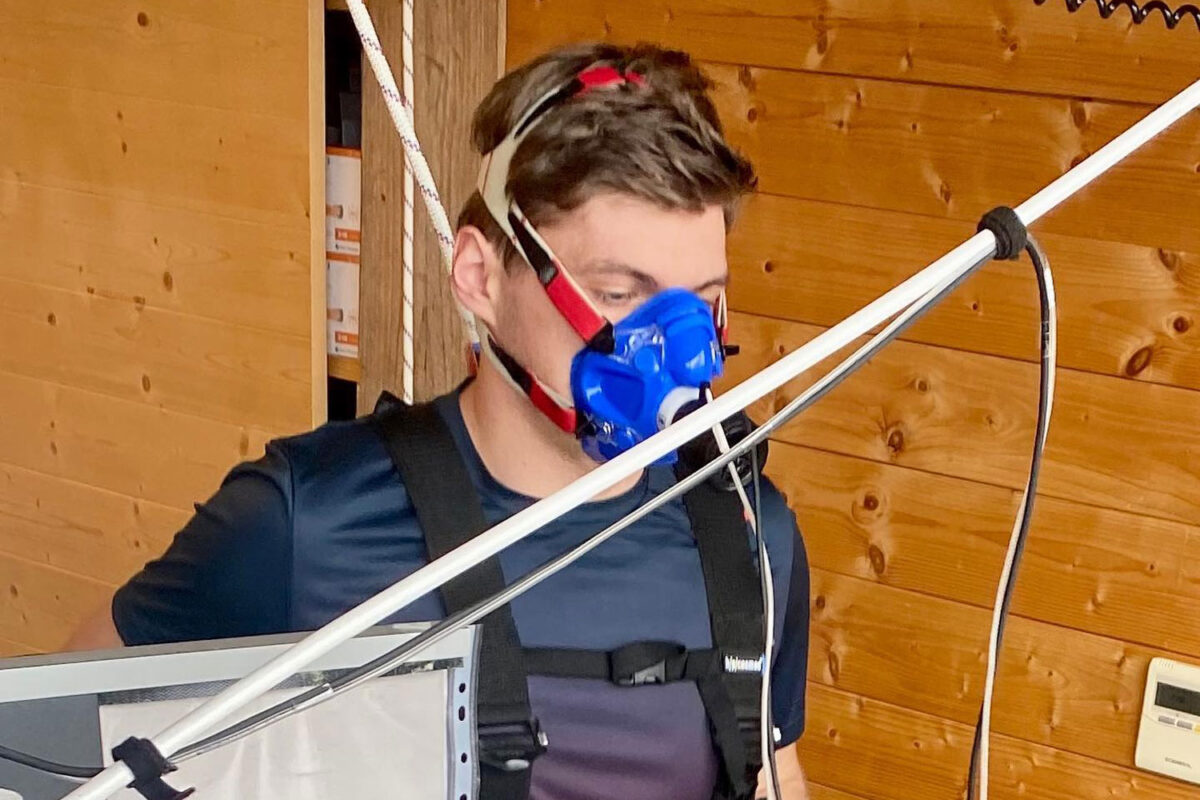You may still be disinclined to believe it, but face it, Formula One drivers need to be incredibly fit. Not only do they have to spend two to three hours sitting in a car going around a track several times, placing a serious mental toll upon them, but they have to withstand high g-force when going through corners and braking hard from high speed.
Formula One drivers also need to ensure they keep their bodyweight as light as possible to make the total weight of the car as light as possible. Not an easy task, considering they also need to build muscle to increase their strength. We’ve previously examined the various workouts Formula One drivers perform, such as Australian driver Daniel Ricciardo’s circuit workout, as well as workout to help him improve his reaction times.
Current World Champion Max Verstappen also recently showed off a home workout, although, we wouldn’t recommend you copy it exactly, because his form was far from perfect. Not one to be deterred, the Red Bull star has now posted another workout to his Instagram feed, although its actual benefits aren’t entirely clear.
View this post on Instagram
In his Instagram post, Max shows himself running on a treadmill wearing a mask to restrict the amount of air he’s able to breathe. Many believe this to be known as oxygen restriction training – or hypoxia training – however, this refers to restricting the actual amount of oxygen you’re able to breathe and is meant to mimic conditions experienced at high altitude.
What Max Verstappen is doing is better known as respiratory muscle training (RMT), whereby you’re restricting the total amount of airflow going into your lungs. It’s key to remember how these two training methods are different. While there is obviosuly oxygen in the air we breathe, and by limiting the amount of air you can breathe via RMT you will reduce the amount of oxygen you’re able to get into your body, it isn’t the same as training at alitude.
As Bodybuilding.com explains, when you train at altitude – hypoxia training – the total amount of oxygen within each gulp of air is far less, this is why the air is thinner. When you train at altitude, and reduce the total units of oxygen taken in to the body, your body “responds by increasing myoglobin/hemoglobin content and capillary density, and consequently increasing oxygen transport to muscles”
One study did find evidence to suggest that RMT (wearing a mask while exercising) does indeed improve your respiratory function, however, the same study also found “these improvements in respiratory muscle function are not transferable to VO2max or endurance exercise capacity as assessed at 85% VO2max in competitive athletes.” Essentially, actual performance at high-intensity isn’t affected.
So, does this mean Max Verstappen is once again performing a useless workout? Potentially, yes. However, another study that looked at the effect of inspiratory muscle training on handball players (a completely different sport, we agree) did find an “improvement in aerobic physical performance in handball athletes.”
It continued: “These findings could be applied in sports training as a strategy to minimize the effects of respiratory fatigue in athletes, favoring a greater time in practice and an improvement in overall performance.”
Essentially, by placing greater demand on his respiratory system, Max could find his body is better able to cope with the physical demands of a Formula One race. In other words: he’s better able to control his breathing and so will remain calmer under the pressure.
It wasn’t just restrictive training Max revealed in his Instagram post, as the third slide shows him perform some rather brutal crunches. The ab crunch machine is a regular in most gyms, and can help you to improve the strength of your abdominal muscles. However, some only focus on the upper section, while others better target the lower section. However, most ab machines ignore one crucial aspect, according to Fitness19.com; stabilisation.
“A lot of the machines will aid in mobilization, but they can’t help your deep stabilizing core muscles.”
We will admit, however, that the ab crunch machine Max is using is likely to be far tougher than what you’ll find in your gym, just by looking at the grimace on his face. With this workout, Max appears to be fighting an incredibly high amount of resistance in order to crunch his body forward, and so will likely be engaging his entire core to help him do so. His legs are firmly locked in position too, meaning all the work is placed upon his core to get the machine to move.
Whether you want to imitate Max’s latest workouts is up to you. There still isn’t a huge amount of evidence to support oxygen restriction training, and if anything, it could cause more harm than good if you don’t have the same peak level of fitness as a professional athlete.
Read Next
